
Hey y’all! Thanks so much for stopping by. My name is Laura and I am an Elementary School Counselor turned Curriculum Writer. At my precious school in Nashville, TN, 97% of my students were living in …
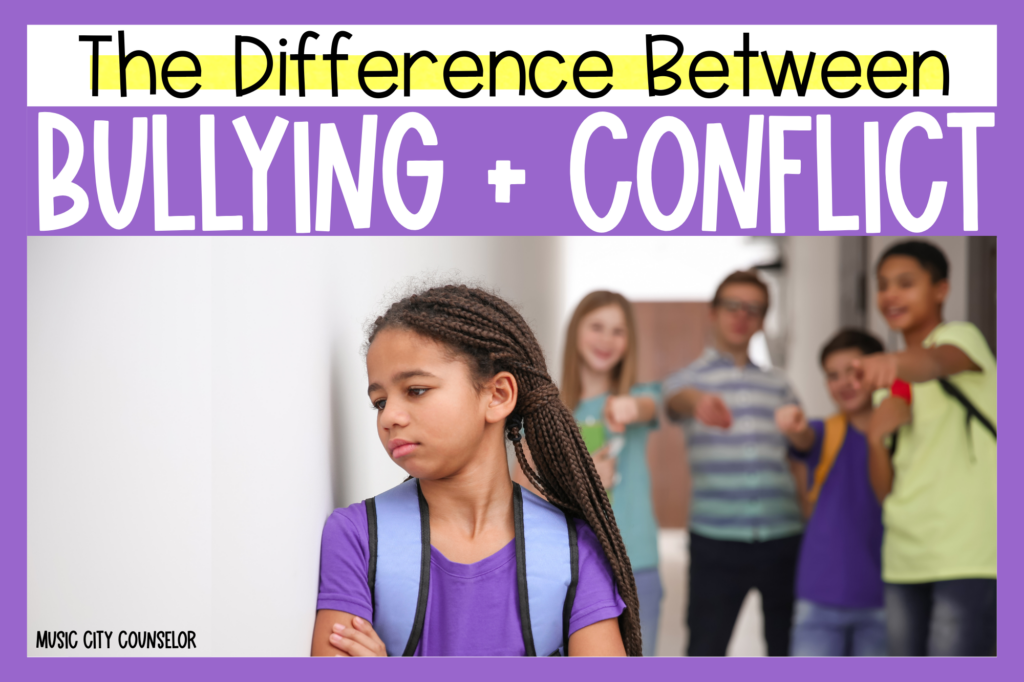
Problems between friends and classmates happen all the time, and it’s hard for young children to know when a problem is bullying or just a conflict. The most current research finds that approximately one in five school-aged children are victimized by bullying. Helping students understand the difference between bullying and conflict can decrease incidents over time and increase positive social interactions at school!
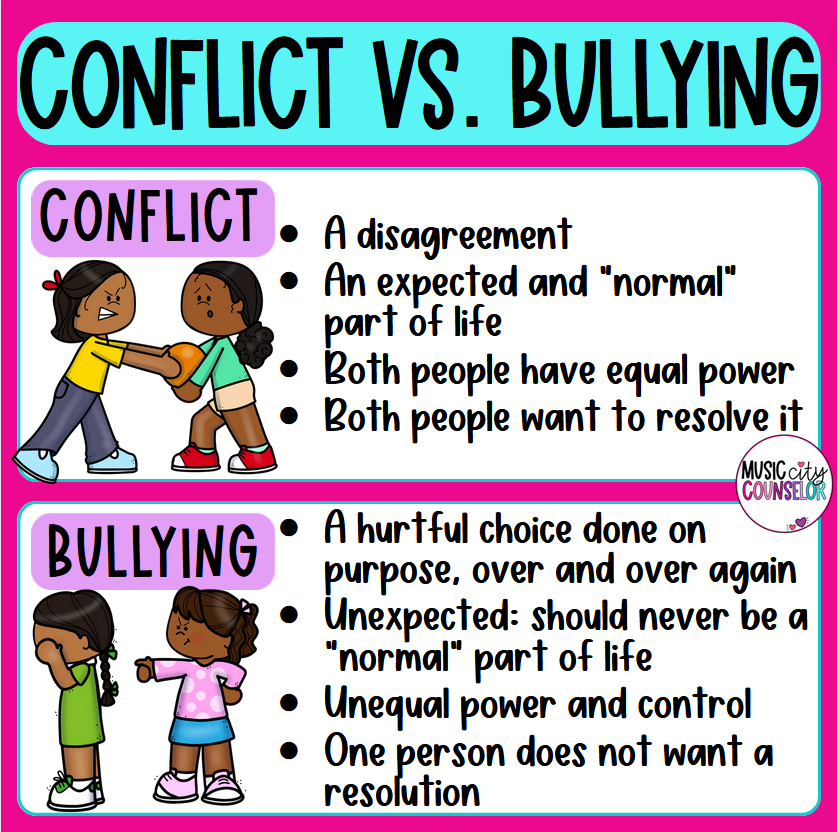
A conflict happens when two or more people have a disagreement. It is usually centered around a difference in point of view between peers. Feelings of anger and frustration are often associated with conflicts.
Conflicts are an expected, normal part of life. In a conflict, everyone has equal power and wants to find a solution.
Bullying is a hurtful choice that is done on purpose, happens over and over again, and is one-sided. It is unexpected and should never be a normal part of friendships.
Bullying is usually associated with wanting control or attention; one person has more power and often does not want to figure out a resolution.
Bullying comes in different forms, but all have the same root of causing harm to another person to get their way.
Cyberbullying involves using technology to harm others. It happens through social media, apps, texts, and chats.
Physical bullying is when a person uses his or her body to harm others. Hitting, kicking, punching, pinching, and pushing are all examples of this.
Using one’s words to harm others is verbal bullying. Name-calling, put-downs, or threats are all types of verbal bullying.
Social bullying is using friendships to harm others. It can be through gossiping, spreading rumors, or excluding others for no other reason than malicious intent.
Bullying can lead to feelings of depression, anxiety, rejection, isolation, and exclusion. Sometimes, these emotions can play a role in suicidal ideation.
The National Center for Educational Statistics reported the following data in 2019:
The goal of intervention is to empower students to solve conflicts themselves (and give them the tools to do so), and educate them on how to identify, stop, and report bullying.
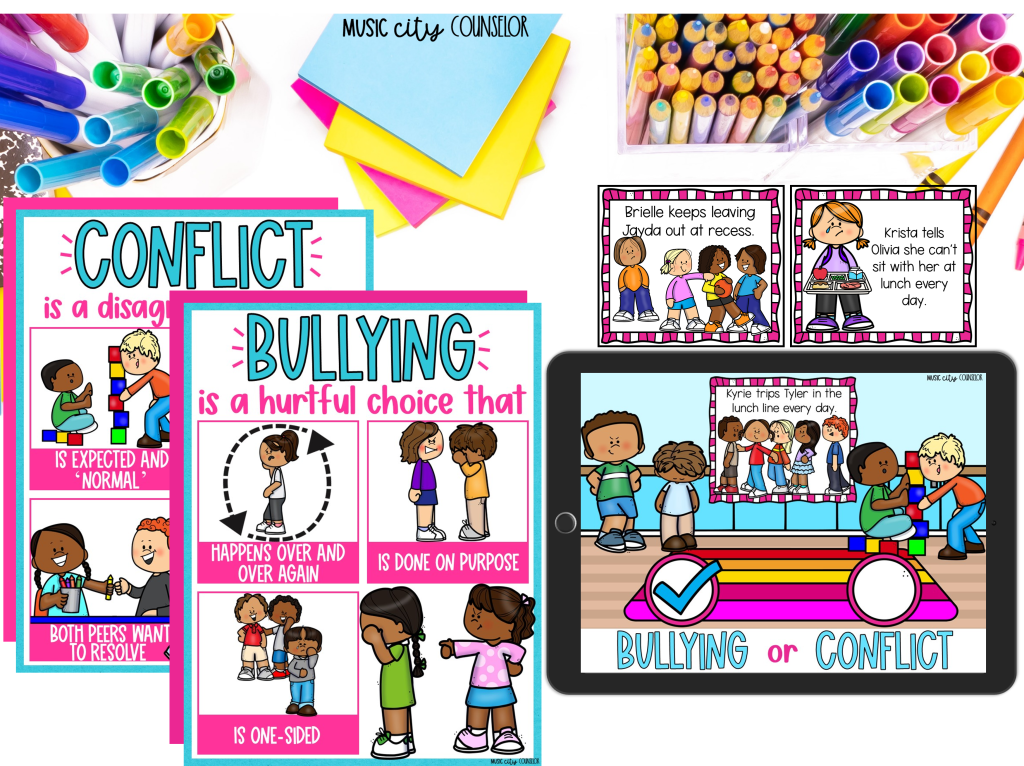
Use resources like this Bullying or Conflict Lesson to teach the differences between bullying and conflict. The interactive activities in this resource (especially the sorting game) offer practical scenarios to help students understand bullying vs. conflict. They also teach students how to peacefully resolve conflicts and safely and effectively intervene in bullying situations.
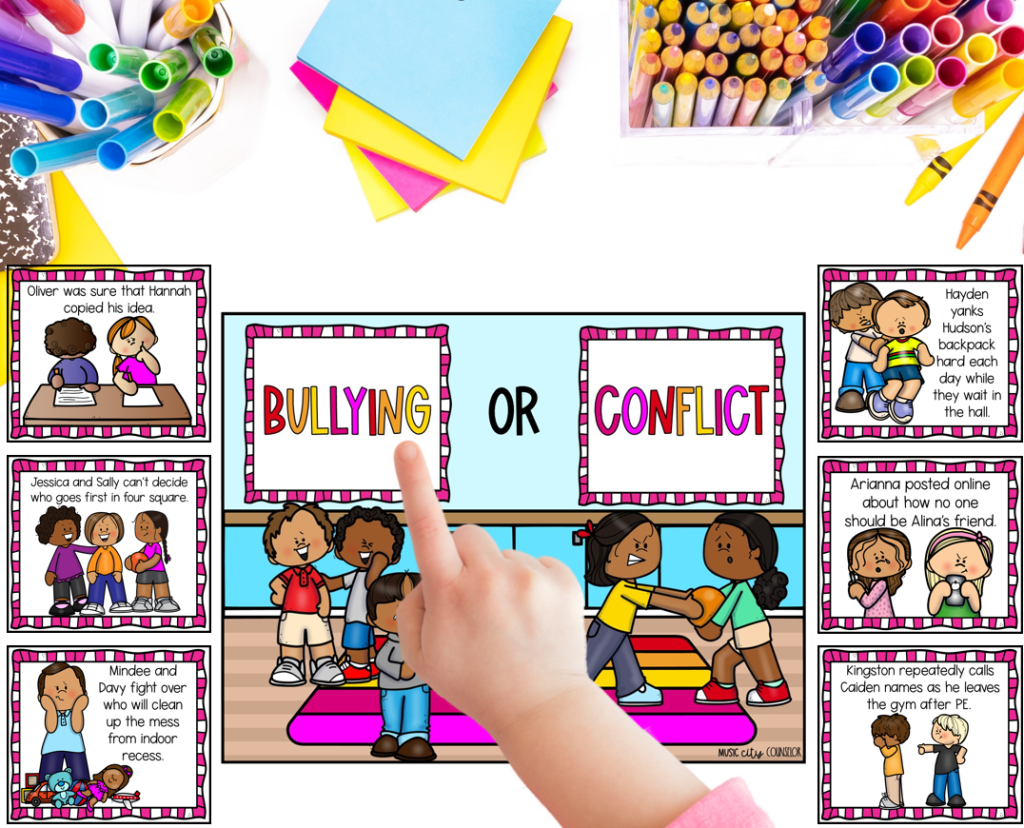
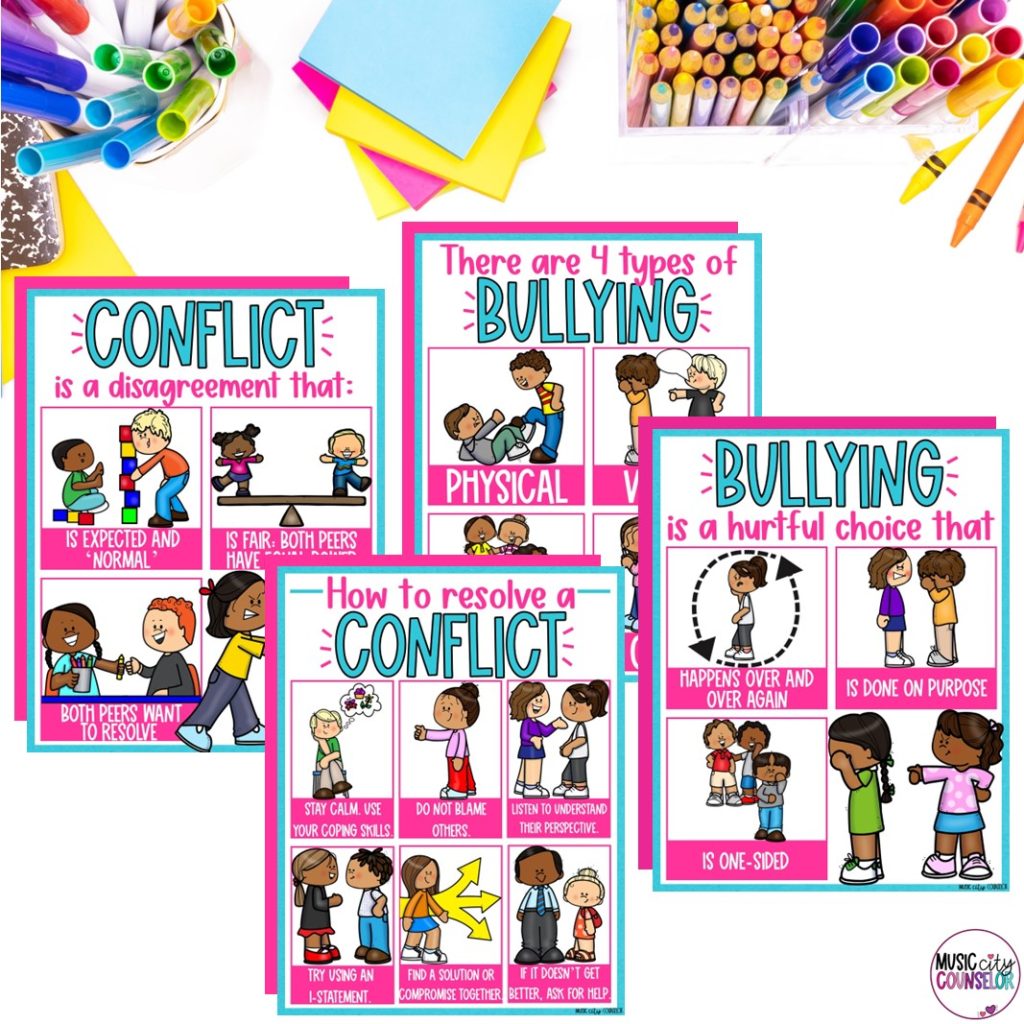
As educators, it can be difficult to know how and when to intervene with problems between peers. Teach specific strategies to students so that they can confidently know what to do when experiencing a conflict or bullying.
If none of these strategies work, students should ask a trusted adult for help!
Make it clear to your students that they need to report bullying to an adult right away! Reporting bullying does not make them a “tattletale” or a “snitch.”
Encourage students to be bold and be an upstander by standing up for each other (only when it won’t result in more harm to anyone).
If a student experiences bullying, they should walk away and immediately find a safe friend or adult.
Teaching students to identify the difference between bullying and conflict is a critical part of positive social-emotional well-being in the classroom.
I hope that this blog post offered information, ideas, and resources that you can put into practice to support your students with bullying and conflict!

| Cookie | Duration | Description |
|---|---|---|
| cookielawinfo-checkbox-analytics | 11 months | This cookie is set by GDPR Cookie Consent plugin. The cookie is used to store the user consent for the cookies in the category "Analytics". |
| cookielawinfo-checkbox-functional | 11 months | The cookie is set by GDPR cookie consent to record the user consent for the cookies in the category "Functional". |
| cookielawinfo-checkbox-necessary | 11 months | This cookie is set by GDPR Cookie Consent plugin. The cookies is used to store the user consent for the cookies in the category "Necessary". |
| cookielawinfo-checkbox-others | 11 months | This cookie is set by GDPR Cookie Consent plugin. The cookie is used to store the user consent for the cookies in the category "Other. |
| cookielawinfo-checkbox-performance | 11 months | This cookie is set by GDPR Cookie Consent plugin. The cookie is used to store the user consent for the cookies in the category "Performance". |
| viewed_cookie_policy | 11 months | The cookie is set by the GDPR Cookie Consent plugin and is used to store whether or not user has consented to the use of cookies. It does not store any personal data. |